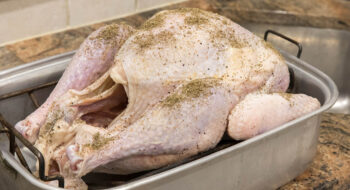For many people, the arrival of warmer spring temperatures means it’s time to get back to grilling outdoors.
Although grilling and healthy eating aren’t always associated with each other, there’s no reason they can’t be.
“In fact, there are many tweaks you can make to give outdoor cooking a more nutritious bent,” says Jamie Kandora, clinical nutrition manager for Tidelands Health.
Here are five tips for healthier – and delicious – outdoor cooking:
1. Bring on the veggies
Meat is often the star of outdoor cooking, but if you’re not also throwing veggies on the grill, you’re missing out on considerable nutritious benefits—and some delectable flavors to boot.
Cooking vegetables such zucchini, asparagus and corn on the grill can give them a delicious caramelization and flavor. They’re also full of vitamins and other good-for-you nutrients.
“Try filling your plate with more veggies than meat,” Kandora says. “That way you’ll be able to fill up on these more nutrient-dense items while also keeping your meat portion in check.”
2. Limit processed meats
Processed meats such as hot dogs and kielbasa are grilling staples, but they are also high in fat, calories and salt. In addition, research has shown a link between processed meat consumption and certain diseases, such as cancer.
For these reasons, you should try limiting your intake of processed meat when cooking outdoors and in your day-to-day diet.
“Processed meat should be consumed in moderation, if at all,” Kandora says. “For your backyard cookout, cook less of these meats than you normally would so you’re not tempted to overindulge.”
She says it’s also important to try to limit charring of meats, which has been linked to increased cancer risk.
3. Go light on sauce
Who doesn’t love delicious, finger-licking barbecue sauce?
While sauces are a grilling staple in many households, they also tend to be made with a lot of sugar or corn syrup and can be highly caloric.
“This is another place where moderation is important,” Kandora says. “Going easy on the sauce can help save you a few calories.”
4. Throw in some seafood
Beef, pork and poultry aren’t the only proteins that thrive on the grill. Shrimp and fish are perfectly suited for it, too.
Not only do they taste great when grilled, they are also great sources of nutrients such as omega-3 fatty acids, minerals and antioxidants.
“Swapping some of your pork or beef with seafood is an easy way to bring some healthful options to the table,” Kandora says.
5. Be wary of greasy snacks
Snacks and side dishes such as potato salad, chips and dips are common when grilling, but mayonnaise-heavy dishes and greasy snacks can be loaded with fat.
“Consider swapping out a sour-cream based dip for hummus or a vegetable medley,” Kandora says. “If you want to keep the potato salad, make it with less mayo to help reduce the fat and calories.”
If you are interested in improving your diet, consult with your physician, a dietitian or other qualified provider. He or she can help you evaluate your diet and improve your nutrition.





